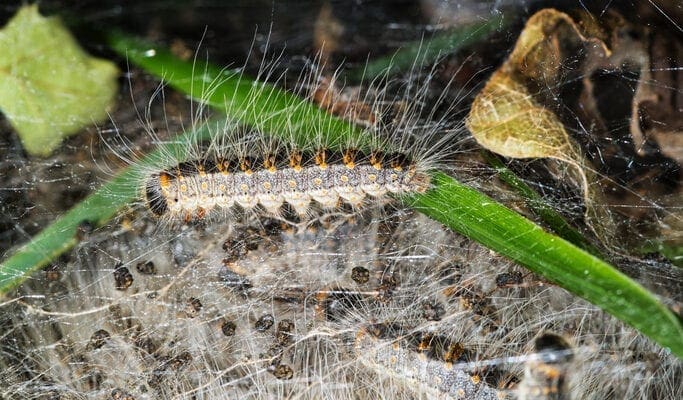Gardeners are warned to stay clear of oak tree caterpillars
Caterpillars that can cause breathing difficulties and skin, eye and throat irritations have hatched in the south-east of England, and gardeners are being warned to steer clear. If you live in the affected area and have an oak tree in, or overhanging, your garden or allotment, watch out for oak processionary moth caterpillars, which can affect the health of oak trees, people and animals.
The caterpillars feed on oak leaves, and large populations can strip trees bare. A protein in the caterpillars’ hairs can cause skin and eye irritations, sore throats and breathing problems, so you should not touch them or their nests, and keep children and pets away.
Thought to have been accidentally introduced from Europe in 2005, the moth is currently present only in London and some neighbouring counties. The biggest infestations have been recorded in Greater London, from Kingston upon Thames to Brent. Infestations have also been spotted in Bracknell Forest, Slough and Guildford. This year the caterpillars emerged in mid-April, and a Forestry Commission treatment programme in affected areas will continue until late May or early June.
If you see oak processionary moth caterpillars, you’re asked to report it. Key identifying features are:
- They move about in nose-to-tail processions, or in arrow-headed processions, with a leader and subsequent rows containing several caterpillars abreast
- They are most likely to be found in oak trees, or on the ground under oak trees
- They have very long, white hairs which contrast markedly with other, shorter hairs
The advice is to see a pharmacist for relief from irritations after suspected contact, or a doctor if you have a serious reaction, and to get a professional pest controller to remove the infestation.
Find out more, including how to report sightings, at https://www.forestry.gov.uk/oakprocessionarymoth





